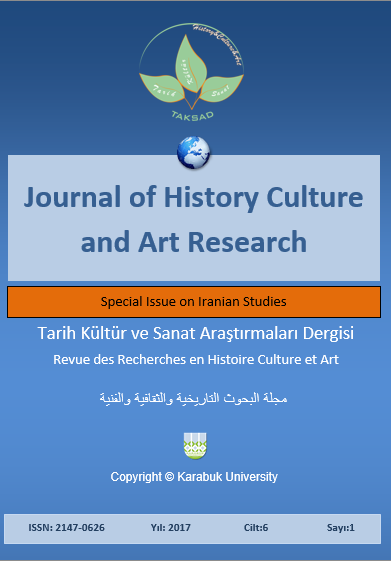An Investigation into the Factors Affecting the Design of Nature-Compatible Recreational-Residential Complexes- Instance Analysis
DOI:
https://doi.org/10.7596/taksad.v6i1.743Keywords:
Nature, Tourism, Nature-compatible samples, Recreational-residential zones.Abstract
Explaining tourism concepts, standards of recreational-residential complexes and the methods for accurate treating with nature, this paper tries to study the suitable instances of recreational-residential complexes and to adopt their positive aspects as a design strategy. SWOT matrix was built based on the weaknesses and strengths of the project site and design principles were derived by observing the extracted influential factors.
Considering land topography, for example, different areas of buildings were shifted and combined with the nature.
- Residential and public zones gained a nice view towards the nature by keeping their orientation and extending them in east-west direction
- Service section connected more appropriately with residential and public areas
- Sections which do not need extra light such as W.Cs, storages and installation rooms, were considered in a side of the building which was adjacent to soil
- In residential section, rhythm was implemented in ceilings and windows
- Golden values and proportions were used to design the plane and façade of the complex
References
Allan, M. W. & Shaw, G. (2002). Crirtical Issues in Tourism: A Geographical Prespective. 2nd Edition. Oxford: Blackweel Publishers ltd.
Bártolo, H. M. G. & Bártolo, P. J. S. (2002). Borrowing from Nature to Support Architectural, Design. In: Greenwood, D. (Ed.), 18th Annual ARCOM Conference, 2-4 September 2002, University of Northumbria. Association of Researchers in Construction Management, Vol. 1, 155-164.
Doswell, Roger (2005). Tourism: How Effective Management Makes the Difference. Third Edition. Translated by Seyyed Mohammad Arabi and David Divine. Tehran: Cultural Research Bureau.
Heidari, Chianeh, R. (2004). "Evaluation Planning Tourism Industry in Iran", Doctoral Dissertation, Tabriz: Tabriz University, Faculty of Humanities and Social Sciences.
Khaksar, A., Tahmouri, A. & Hoseinrazavi, S. (2011). The Reciprocal Effects of Arthitecture and Tourism: The Sustainability Approach, Journal of Tourism, Hospitality & Culinary Arts, Vol. 2 No.3, pp. 33-44.
McDonough, W. & Braungart, M. (1998). The Next Industrial Revolution. Atlantic Monthly, October, 82–92.
Memarian, G. H. (1996). Meet Eccentric Typology of Residential Architecture. Tehran: University of Science and Technology.
Nasr, Seyyed Hossein (2001). Man and Nature: The Spiritual Crisis in Modern Man. Translated by Doctor Abdul Rahim Govahi. Tehran: Islamic Culture Publications Office.
Orr, D. W. (2002). The Nature of Design: Ecology, Culture, and Human Intention. Newyork: Oxford University Press.
Rahnamaee, Mohammad-Taqi (2001). Tourism Master Plan for Ardabil, Vol. I.
Rutes, W. A. & Penner, R. H. (1985). Hotel Planning and Design. New York: Whitney Library of Design.
Wann, David (1994). Bio Logic: Designing with Nature to Protect the Environment. Boulder, CO: Johnson Books.
Wood, M. E. (2007). Ecotourism: Principles, Practices and Policies for Sustainability. Translated by Negar Ghadimi, Tehran: Thoughts.
Yeang, Ken (1995). Designing with Nature: The Ecological Basis for Architectural Design, McGrow Hill Inc.
Yeang, Ken (2008). Ecoskyscrapers and Ecomimesis: New tall Building Typologies, CTBUH 8th World Congress.
Downloads
Published
How to Cite
Issue
Section
License
All papers licensed under Creative Commons 4.0 CC-BY.- Share — copy and redistribute the material in any medium or format
- Adapt — remix, transform, and build upon the material for any purpose, even commercially.
Under the following terms:
Attribution — You must give appropriate credit, provide a link to the license, and indicate if changes were made. You may do so in any reasonable manner, but not in any way that suggests the licensor endorses you or your use.
- No additional restrictions — You may not apply legal terms or technological measures that legally restrict others from doing anything the license permits.







